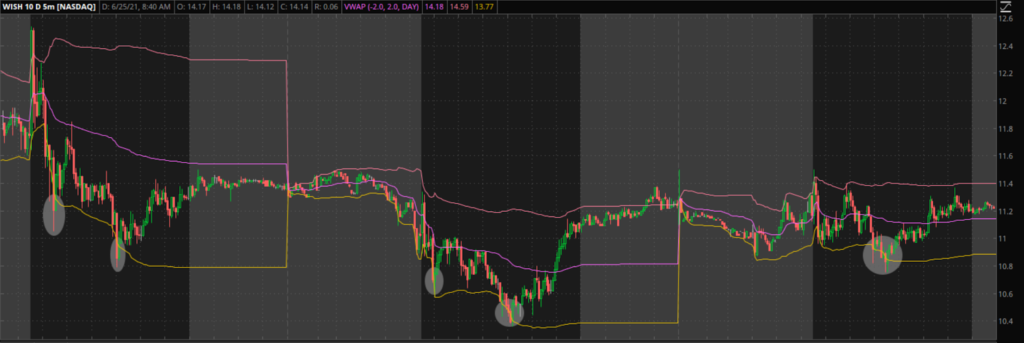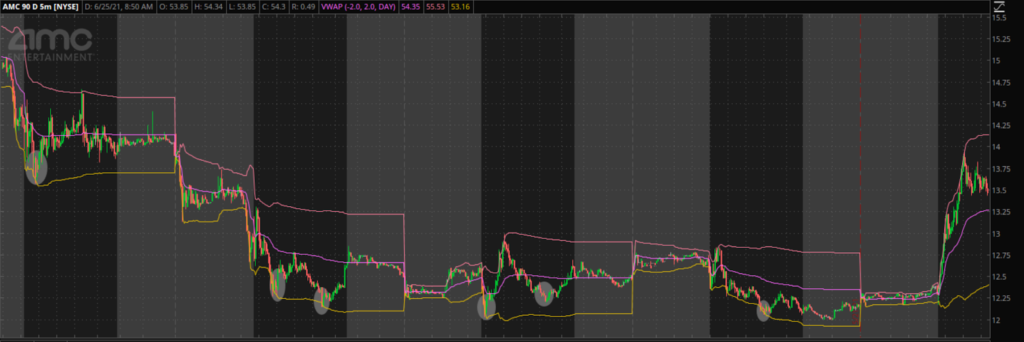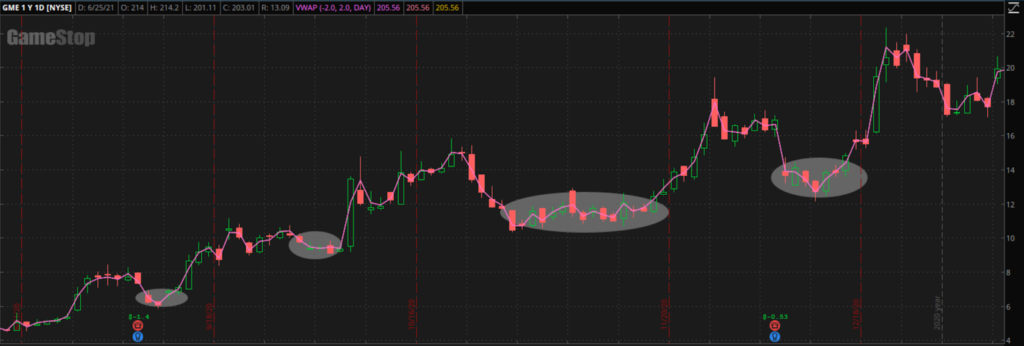What’s one piece that joins together all the more recent high runners?
What did the meme names like GME, AMC, BBBY and EV names like TSLA, NIO, NKLA have in common, as they were making their way higher?
There’s a factor that often pre-determines the only direction a hot stock can go in… and it’s a short trap!

Most of these names had short traders stuck in their deeply red positions, and it was their eventual liquidations that took share prices so high in the sky.
So, you might ask, how do you attempt to spot a trap in the making?
Well, my method is to find a stock that’s “not wanting to do down,” and today I want to teach you precisely what that’s all about.
But first…
What Is a Short Trap?
I’m sure that most of you know what short interest is – if you do, you’re on the right track.
But short interest itself doesn’t make the stocks go higher – forced covering by those short traders does.
And they won’t cover until they’re uncomfortable!
So let’s take short interest one step further and identify short traps – areas where short traders pile in, thinking the move is over.
Here’s GME, as it was setting up for its gigantic move:
As you can see, anybody who shorted in highlighted areas quickly got notably red in a matter of days.
A Stock Not Wanting To Go Down
So here’s some of Captain Obvious for you: a stock doesn’t want to go down when it tries to move lower, but can’t.
Not overly sophisticated, eh?
Well, let me explain this in a little more detail: when a stock gets really extended, it creates incentive for many short traders to get in, expecting a reversal or at least a pullback.
The more a name extends – the more aggressively short traders will pile in for a breakdown.
Our goal is to identify spots where shorts have in fact piled in big time, yet the stock is still holding higher – any move higher from that point will cause a wave of covering.
For a practical example of what I mean, let’s review how ContextLogic (WISH) has traded over the past week:
Having bled straight down for months on end, WISH, all of a sudden, doubles over 2 days and then pulls back quite a bit, showing short traders the “pump” might be over.
Many of them try to get in for a move back to where the stock came from, let’s see how this works out:

Note multiple aggressive pushes lower on high volume… and note how they snap right back!
Everybody shorting into those is at least at breakeven, at worst – slightly red.
The stock then advances higher, putting them all significantly red and what happens next:

It establishes a little higher with many shorts already trapped.
And yet again – every time it tries to push lower, it just can’t.
See what I mean? Not so Captain Obvious anymore, am I?
What eventually happens is a quick 20% short squeeze higher.
Still unsure if you should believe me? Fine, let’s have a look at AMC as it was setting up for the initial squeeze:

See anything similar? It just won’t sell off, no matter how hard they try!
Here’s AMC a little later, right before it’s massive squeeze to $60:

These aren’t mirror images, obviously, but there’s clearly a pattern, right?
Although we must all understand that there are no guarantees or sure things in trading, spotting an obviously shorted name “not wanting to go down” can be an incredible tool in your arsenal.





7 Comments
Thanks Jason. You and Jeff are great. Are you Mensa too?
Perfect evaluation of the set up
Thank you! 👍👍
Very informative
Learned again. Thanks!
Thanks for this opportunity to communicate directly with you.
When I first started following you, I thought Jeff’s triggers of chart lines crossing was oversimplistic. What a fraud, I thought.
I was proven wrong. It actually works.
Video in jet — Well, anybody can lease one, or buy a limited use membership. And it was, afterall, a pretty small one.
I even voiced my opinions on this shadiness on this very forum, much to my later regret.
Jeff had previously made a Monday morning Bullseye call on Mcd, but when I looked at the chart I was more inclined to buy puts instead of calls. Sure enough, for two days it went down before slingshoting up.
And hit after hit after hit…
And Jason’s high-dollar, high liquidity spreads were sent straight from heaven. Not having to buy 100 contracts, or cover if there’s an upset, were the essence of common sense cash flow scaling. The proceeds from those winners could be used for higher risk trades, with principal secure.
Then came the December punch between the eyes, and I didn’t know what to think.
Glad you’re back. You seem very determined to prove yourselves with very little mention of anything high risk.
I only have one question. Does getting $1M with you still qualify me to get a new 911?
Thank you for doing whatever it took to get you back in and I would one day like to hear the whole story.
Thank you so much.
Am trying to understand what you wrote and the pics but it’s difficult. Is it possible to point out the things you are thinking are obvious and maybe be a little more simplistic for non advanced traders? Just still not sure how I would spot the short trap in the future – which I would love to be able to do. Thank you!